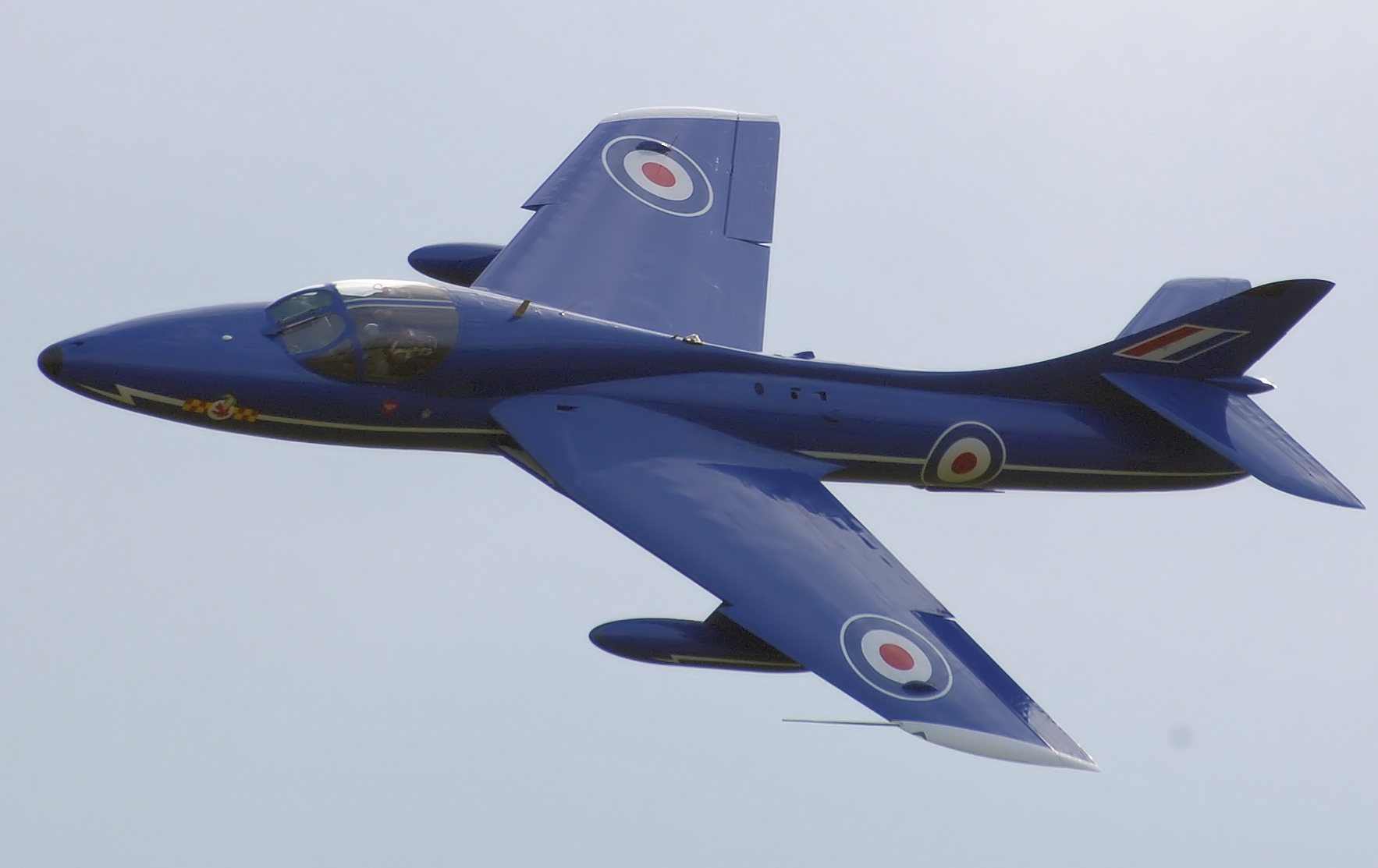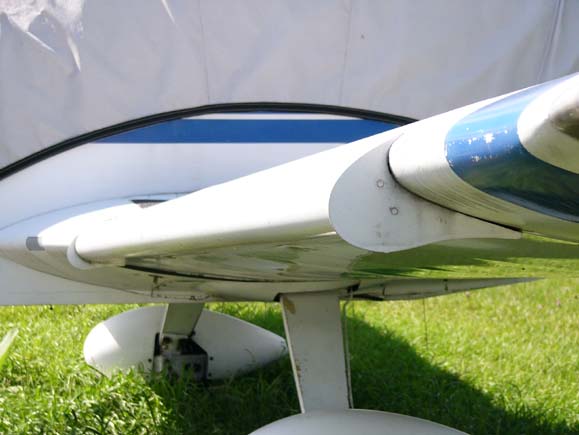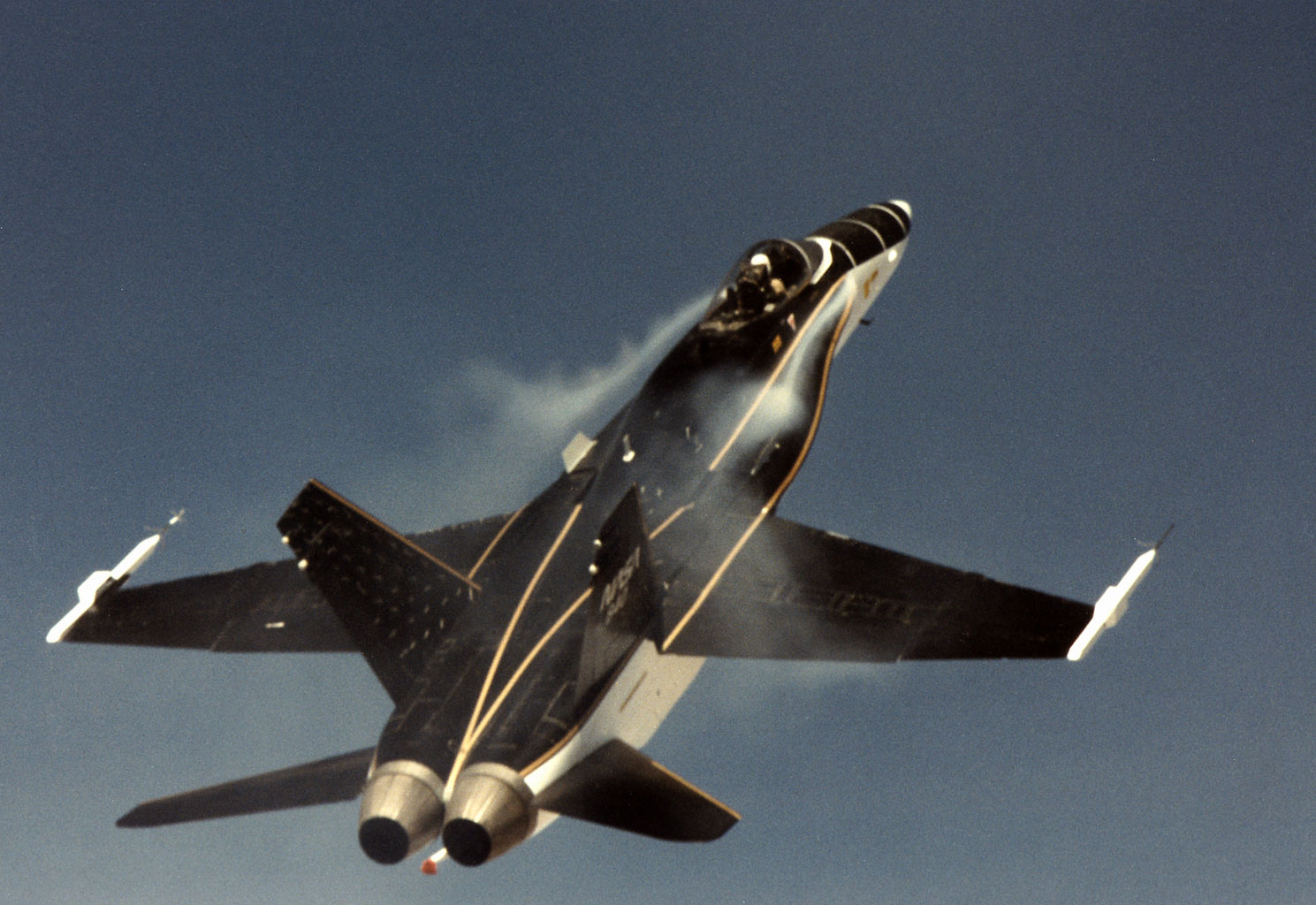Leading edge extension on:
[Wikipedia]
[Google]
[Amazon]
 A leading-edge extension (LEX) is a small extension to an aircraft wing surface, forward of the leading edge. The primary reason for adding an extension is to improve the airflow at high
A leading-edge extension (LEX) is a small extension to an aircraft wing surface, forward of the leading edge. The primary reason for adding an extension is to improve the airflow at high
 A
A
 A dogtooth is a small, sharp zig-zag break in the leading edge of a wing. It is usually used on a swept wing, to generate a
A dogtooth is a small, sharp zig-zag break in the leading edge of a wing. It is usually used on a swept wing, to generate a
 A leading edge cuff (or wing cuff) is a fixed
A leading edge cuff (or wing cuff) is a fixed
 A leading-edge root extension (LERX) is a small fillet, typically roughly triangular in shape, running forward from the leading edge of the
A leading-edge root extension (LERX) is a small fillet, typically roughly triangular in shape, running forward from the leading edge of the
angles of attack
In fluid dynamics, angle of attack (AOA, α, or \alpha) is the angle between a reference line on a body (often the chord line of an airfoil) and the vector representing the relative motion between the body and the fluid through which it is ...
and low airspeeds, to improve handling and delay the stall. A dog tooth can also improve airflow and reduce drag at higher speeds.
Leading-edge slat
 A
A leading-edge slat
Slats are aerodynamic surfaces on the leading edge of the wing of a fixed-wing aircraft which, when deployed, allow the wing to operate at a higher angle of attack. A higher coefficient of lift is produced as a result of angle of attack and speed, ...
is an aerodynamic
Aerodynamics, from grc, ἀήρ ''aero'' (air) + grc, δυναμική (dynamics), is the study of the motion of air, particularly when affected by a solid object, such as an airplane wing. It involves topics covered in the field of fluid dyn ...
surface running spanwise just ahead of the wing leading edge. It creates a leading edge slot
A leading-edge slot is a fixed aerodynamic feature of the wing of some aircraft to reduce the stall speed and promote good low-speed handling qualities. A leading-edge slot is a spanwise gap in each wing, allowing air to flow from below the wing ...
between the slat and wing which directs air over the wing surface, helping to maintain smooth airflow at low speeds and high angles of attack
In fluid dynamics, angle of attack (AOA, α, or \alpha) is the angle between a reference line on a body (often the chord line of an airfoil) and the vector representing the relative motion between the body and the fluid through which it is ...
. This delays the stall, allowing the aircraft to fly at a higher angle of attack. Slats may be made fixed, or retractable in normal flight to minimize drag.
Dogtooth extension
 A dogtooth is a small, sharp zig-zag break in the leading edge of a wing. It is usually used on a swept wing, to generate a
A dogtooth is a small, sharp zig-zag break in the leading edge of a wing. It is usually used on a swept wing, to generate a vortex
In fluid dynamics, a vortex ( : vortices or vortexes) is a region in a fluid in which the flow revolves around an axis line, which may be straight or curved. Vortices form in stirred fluids, and may be observed in smoke rings, whirlpools in ...
flow field to prevent separated flow from progressing outboard at high angle of attack. The effect is the same as a wing fence. It can also be used on straight wings in a drooped leading edge arrangement.
Many high-performance aircraft use the dogtooth design, which induces a vortex over the wing to control boundary layer spanwise extension, increasing lift and improving resistance to stall. Some of the best-known uses of the dogtooth are in the stabilizer of the F-15 Eagle and the wings of the F-4 Phantom II, F/A-18 Super Hornet, CF-105 Arrow, F-8U Crusader, and the Ilyushin Il-62. Where the dogtooth is added as an afterthought, as for example on the Hawker Hunter and some variants of the Quest Kodiak, the dogtooth is created by adding an extension to the outer section of the leading edge.
Leading-edge cuff
aerodynamic
Aerodynamics, from grc, ἀήρ ''aero'' (air) + grc, δυναμική (dynamics), is the study of the motion of air, particularly when affected by a solid object, such as an airplane wing. It involves topics covered in the field of fluid dyn ...
device employed on fixed-wing aircraft
An aircraft is a vehicle that is able to fly by gaining support from the air. It counters the force of gravity by using either static lift or by using the dynamic lift of an airfoil, or in a few cases the downward thrust from jet engine ...
to introduce a sharp discontinuity in the leading edge of the wing in the same way as a dogtooth. It also typically has a slightly drooped leading edge to improve low-speed characteristics.
Leading-edge root extension
 A leading-edge root extension (LERX) is a small fillet, typically roughly triangular in shape, running forward from the leading edge of the
A leading-edge root extension (LERX) is a small fillet, typically roughly triangular in shape, running forward from the leading edge of the wing root
The wing root is the part of the wing on a fixed-wing aircraft or winged-spaceship that is closest to the fuselage
The fuselage (; from the French ''fuselé'' "spindle-shaped") is an aircraft's main body section. It holds crew, passengers, o ...
to a point along the fuselage. These are often called simply leading-edge extensions (LEX), although they are not the only kind. To avoid ambiguity, this article uses the term LERX.
On a modern fighter aircraft, LERXes induce controlled airflow
Airflow, or air flow, is the movement of air. The primary cause of airflow is the existence of air. Air behaves in a fluid manner, meaning particles naturally flow from areas of higher pressure to those where the pressure is lower. Atmospheric ...
over the wing at high angles of attack
In fluid dynamics, angle of attack (AOA, α, or \alpha) is the angle between a reference line on a body (often the chord line of an airfoil) and the vector representing the relative motion between the body and the fluid through which it is ...
, so delaying the stall and consequent loss of lift. In cruising flight, the effect of the LERX is minimal. However, at high angles of attack, as often encountered in a dogfight
A dogfight, or dog fight, is an aerial battle between fighter aircraft conducted at close range. Dogfighting first occurred in Mexico in 1913, shortly after the invention of the airplane. Until at least 1992, it was a component in every majo ...
or during takeoff and landing, the LERX generates a high-speed vortex
In fluid dynamics, a vortex ( : vortices or vortexes) is a region in a fluid in which the flow revolves around an axis line, which may be straight or curved. Vortices form in stirred fluids, and may be observed in smoke rings, whirlpools in ...
that attaches to the top of the wing. The vortex action maintains the attachment of the airflow to the upper-wing surface well past the normal stall point at which the airflow separates from the wing surface, thus sustaining lift at very high angles.
LERX were first used on the Northrop F-5
The Northrop F-5 is a family of supersonic light fighter aircraft initially designed as a privately funded project in the late 1950s by Northrop Corporation. There are two main models, the original F-5A and F-5B Freedom Fighter variants and t ...
"Freedom Fighter" which flew in 1959, and have since become commonplace on many combat aircraft. The F/A-18 Hornet has especially large examples, as does the Sukhoi Su-27 and the CAC/PAC JF-17 Thunder
The CAC/PAC JF-17 Thunder ( ur , جے ایف-17 گرج), or FC-1 ''Xiaolong'' (), is a lightweight, single-engine, multirole combat aircraft, multi-role combat aircraft developed jointly by the Chengdu Aircraft Industry Group, Chengdu Aircra ...
. The Su-27 LERX help make some advanced maneuvers possible, such as the Pugachev's Cobra
In aerobatics, the cobra maneuver (or just the ''cobra''), also called ''dynamic deceleration'', among other names (see Etymology), is a dramatic and demanding maneuver in which an airplane flying at a moderate speed abruptly raises its nose mom ...
, the Cobra Turn and the Kulbit
The "Kulbit" (also known as the "Frolov chakra") is an aerial maneuver developed by Russian pilots in which the aircraft performs an extremely tight loop, often not much wider than the length of the aircraft itself. It differs from the traditional ...
.
A long, narrow sideways extension to the fuselage, attached in this position, is an example of a chine
A chine () is a steep-sided coastal gorge where a river flows to the sea through, typically, soft eroding cliffs of sandstone or clays. The word is still in use in central Southern England—notably in East Devon, Dorset, Hampshire and the Is ...
.
Leading-edge vortex controller
Leading-edge vortex controller (LEVCON) systems are a continuation of leading-edge root extension (LERX) technology, but with actuation that allows the leading edge vortices to be modified without adjusting the aircraft's attitude. Otherwise they operate on the same principles as the LERX system to create lift augmenting leading edge vortices during high angle of attack flight. This system has been incorporated in the RussianSukhoi Su-57
The Sukhoi Su-57 (russian: Сухой Су-57; NATO reporting name: Felon) is a Twinjet, twin-engine stealth Multirole combat aircraft, multirole fighter aircraft developed by Sukhoi. It is the product of the PAK FA (russian: ПАК ФА, russ ...
and Indian HAL LCA Navy.
The LEVCONs actuation ability also improves its performance over the LERX system in other areas.
When combined with the thrust vectoring controller (TVC), the aircraft controllability at extreme angles of attack
In fluid dynamics, angle of attack (AOA, α, or \alpha) is the angle between a reference line on a body (often the chord line of an airfoil) and the vector representing the relative motion between the body and the fluid through which it is ...
is further increased, which assists in stunts which require supermaneuverability
Supermaneuverability is the capability of fighter aircraft to execute tactical maneuvers that are not possible with purely aerodynamic techniques. Such maneuvers can involve controlled side-slipping or angles of attack beyond maximum lift.
...
such as Pugachev's Cobra
In aerobatics, the cobra maneuver (or just the ''cobra''), also called ''dynamic deceleration'', among other names (see Etymology), is a dramatic and demanding maneuver in which an airplane flying at a moderate speed abruptly raises its nose mom ...
. Additionally, on the Sukhoi Su-57
The Sukhoi Su-57 (russian: Сухой Су-57; NATO reporting name: Felon) is a Twinjet, twin-engine stealth Multirole combat aircraft, multirole fighter aircraft developed by Sukhoi. It is the product of the PAK FA (russian: ПАК ФА, russ ...
the LEVCON system is used for increased departure-resistance in the event of TVC failure at a post-stall attitude. It can also be used for trimming the aircraft, and optimizing the lift to drag ratio during cruise.
See also
*Strake (aviation)
In aviation, a strake is an aerodynamic surface generally mounted on the fuselage of an aircraft to improve the flight characteristics either by controlling the airflow (acting as large vortex generators) or by a simple stabilising effect.
In ...
* Vortex generator
A vortex generator (VG) is an aerodynamic device, consisting of a small vane usually attached to a lifting surface (or airfoil, such as an aircraft wing) or a rotor blade of a wind turbine.
References
{{DEFAULTSORT:Leading Edge Extension Aerospace engineering Aerodynamics Aircraft wing components Aircraft wing design